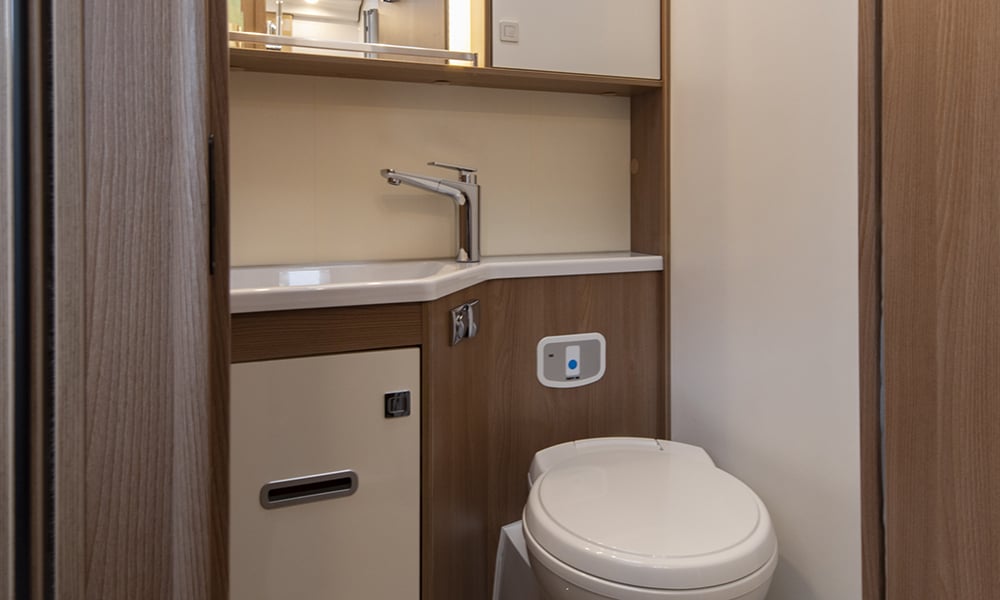Holidaying in a motorhome gives you the freedom to go off-the-beaten-track for days on end — or at least, until you run out of water.
Managing water while travelling around New Zealand will be an important part of your motorhome vacation. You’ll need to know how much water you have, how quickly you’re likely to use it, and how to empty the grey (and refill the fresh) water tanks.
In this blog, we cover all you need to know about water in a Wilderness motorhome — so that you can enjoy your road trip without worrying about running out.
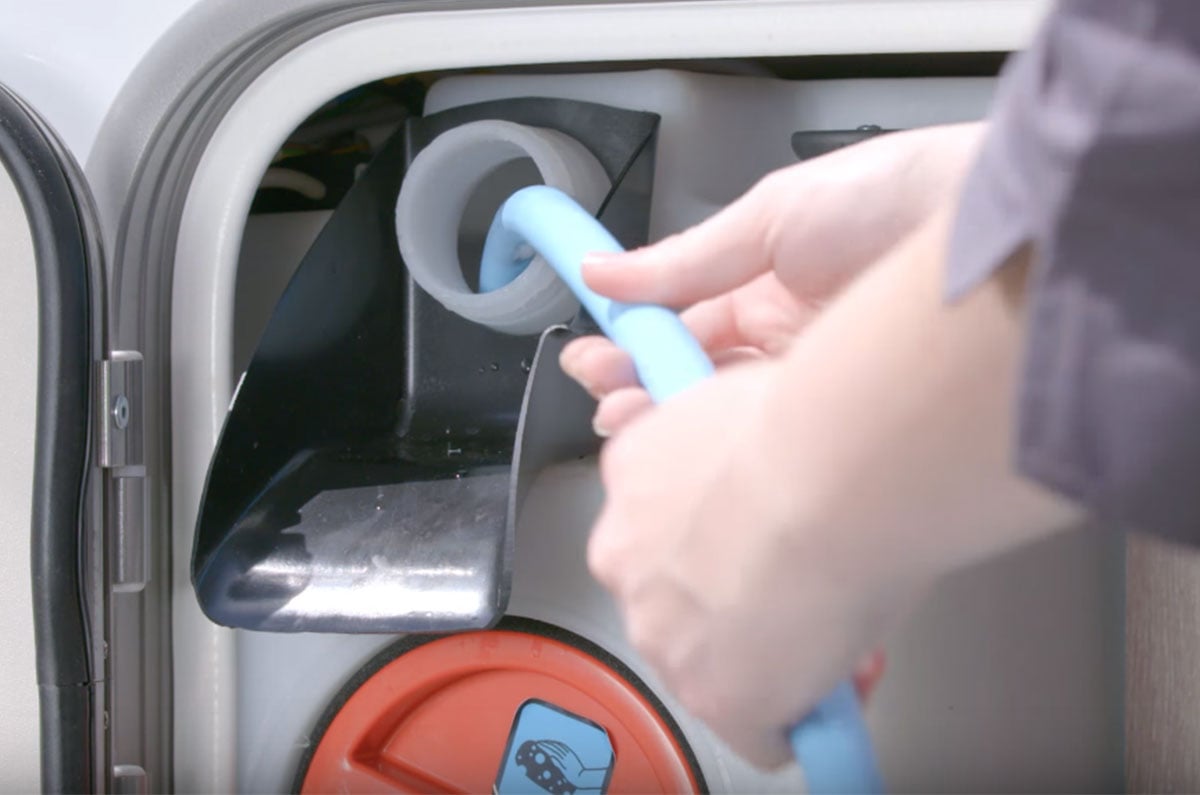
|
Contents |
How your motorhome water system works
You’ll find two water tanks in your motorhome rental — one is for the fresh water and the other is for the grey water used water that does not originate from a toilet . At the start of your hire, the fresh water tank will be full and the grey water one empty.
As you use water in the shower, toilet, hand basin and kitchen sink:
-
The amount of fresh water will reduce
-
Your grey water tank will begin to fill.
Managing your motorhome's fresh water
You'll want to enjoy maximum time freedom camping before having to rejoin civilisation to top up your fresh water tank — and managing your fresh water well is the key.
How long will fresh water last in your motorhome?
How long it takes for the fresh water tank to completely empty varies depending on your usage. If there are only two of you, and you use water economically, it should last four days.
If you have a group of four and intend on taking showers every day, you may need to refill your tank daily. It’s a smart idea to empty your grey water tank at the same time as refilling the fresh water one.
To check the level of water in your fresh water tank, simply press the fresh water tank monitor button on your motorhome’s control panel. It will show whether you have 100 percent, 75 percent, 50 or 25 percent left. If no lights show, it’s time to fill up.
When you’re running low on fresh water, you’ll have to visit a dump station to refill the tank and empty the grey water. If you plan on spending consecutive days freedom camping, aim to minimise your fresh water usage.
Find out everything you need to know about freedom camping in New Zealand.
How to fill your motorhome’s fresh water tank
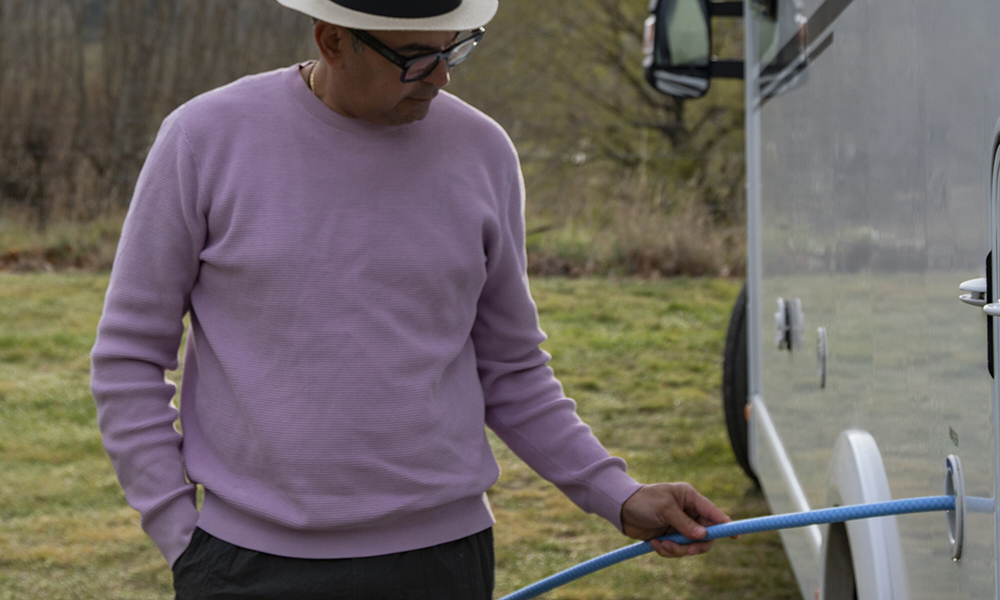
You can expect a full tank of fresh water when picking up your campervan hire. Regularly monitor the RV’s water tank level by holding down the fresh water button on your control panel.
When it’s time to fill your fresh water tank, follow these steps:
-
Drive your motorhome to the nearest dump station and park it as close as you can
-
Ignore any hoses at the dump station and remove your motorhome’s fresh water hose from its bag
-
Find the fresh water tap inlet on the outside of your motorhome
-
Unlock the filler cap using the water inlet key
-
Place one end of your hose inside the water tank
-
Attach the other end of the hose to the dump station tap
-
Turn on the tap to begin filling your motorhome’s fresh water tank
-
When water starts overflowing your tank is full so turn off the tap
-
Replace the filler cap and lock it using your key
-
Remove your hose from the tap and put it back in its bag.
For a visual run-through of refilling your fresh water tank, see this motorhome onboarding video.
|
Preventing an unexpected empty tank Your motorhome may have an automatic frost protection mechanism which kicks in when the outside air temperature drops to less than five degrees Celsius. The system is designed to prevent water from freezing in the water lines. Keep your motorhome’s heating on to prevent it from emptying your fresh water tank. |
Can you drink your motorhome’s fresh water?
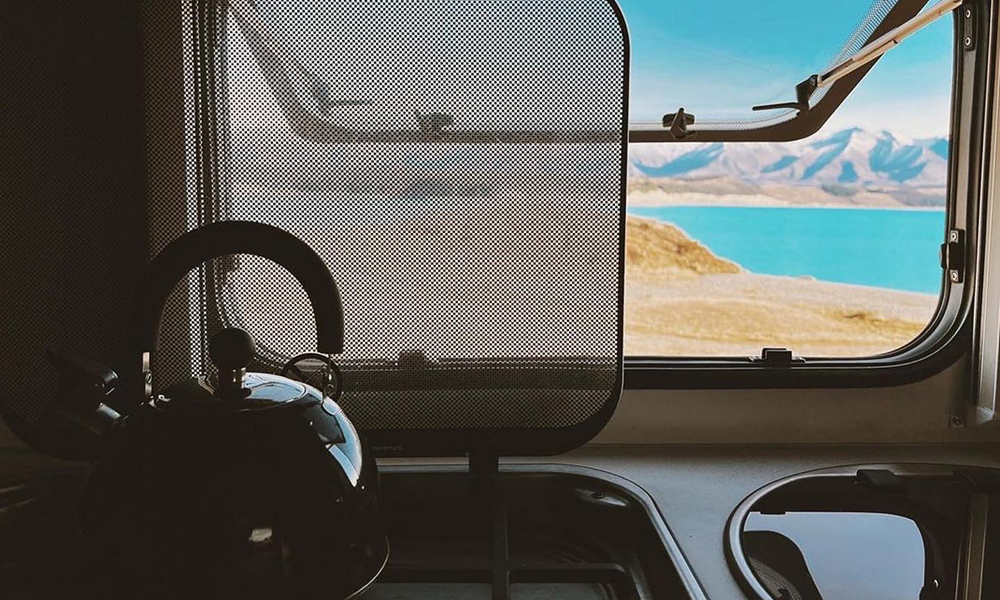
The tap water in New Zealand is usually safe to drink — and that includes the fresh water available from mains water supplies like dump stations.
You usually don’t need to filter New Zealand water. However, water supplies in some remote areas may carry waterborne microbes that can cause illness.
Before motorhome water filling, always check for any signs instructing you to boil your drinking water.
How to get hot water
If your motorhome has a combi heater, it will heat both the living area and the hot water. Some combi heaters heat the hot water by either:
-
Liquid petroleum gas (LPG) when you’re freedom camping, or
-
240V mains power when you’re connected at a campground.
You’ll have to turn the motorhome’s heating system on about 40 minutes before you need hot water. It will heat 10-15 litres of water — which is usually enough for a quick shower or to wash the dishes.
Find out everything you need to know about motorhome power.
|
Tips for using less water
|
Managing your campervan’s waste water
Waste water drains from the sink, shower and hand basin into your motorhome’s grey water tank. Try to prevent food scraps, fat, hair and even coffee grounds from going down these drains as they’ll create an odour and may cause a blockage.
Only allow your waste water to enter the grey water tank of your motorhome hire.
The grey water tank is smaller than your fresh water one. Keep this in mind as you’ll need to empty your grey water before you run out of fresh water — even though some fresh water gets directed into your toilet.
|
Black water Black water is collected in your toilet system’s cassette on board your motorhome rental. It’s separate from the grey water tank and can also be emptied at designated dump stations. Take a look at our guide to motorhome toilets for more information on black water. |
How to empty your motorhome’s grey water tank
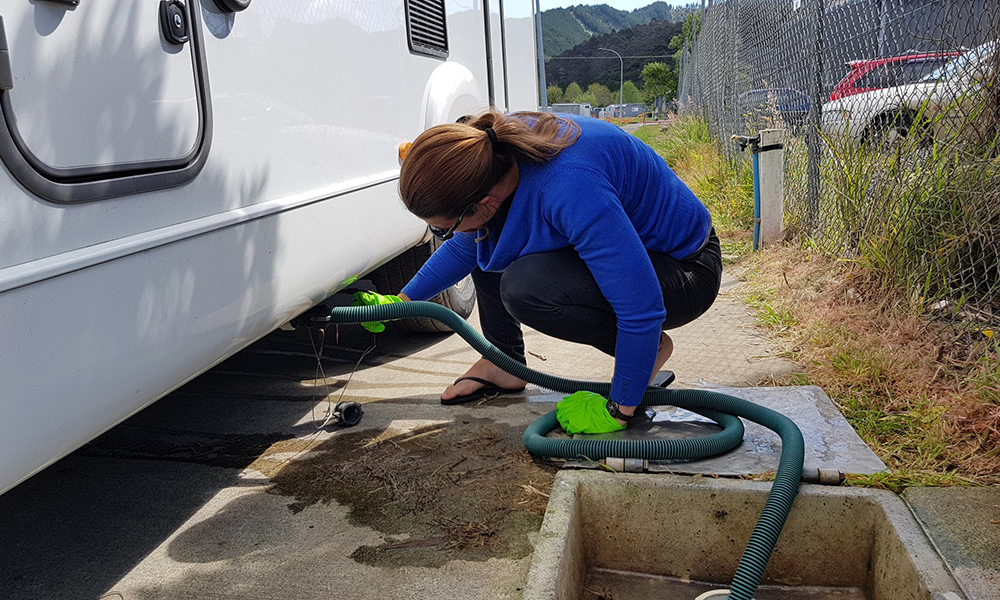
The easiest way of tending to your waste water is by emptying your grey water tank, emptying your black water toilet cassette, and refilling your fresh water tank all at the same location.
You can do all of these tasks at an approved dump station. Look for the blue and white dump station symbol of a campervan with a downward arrow.
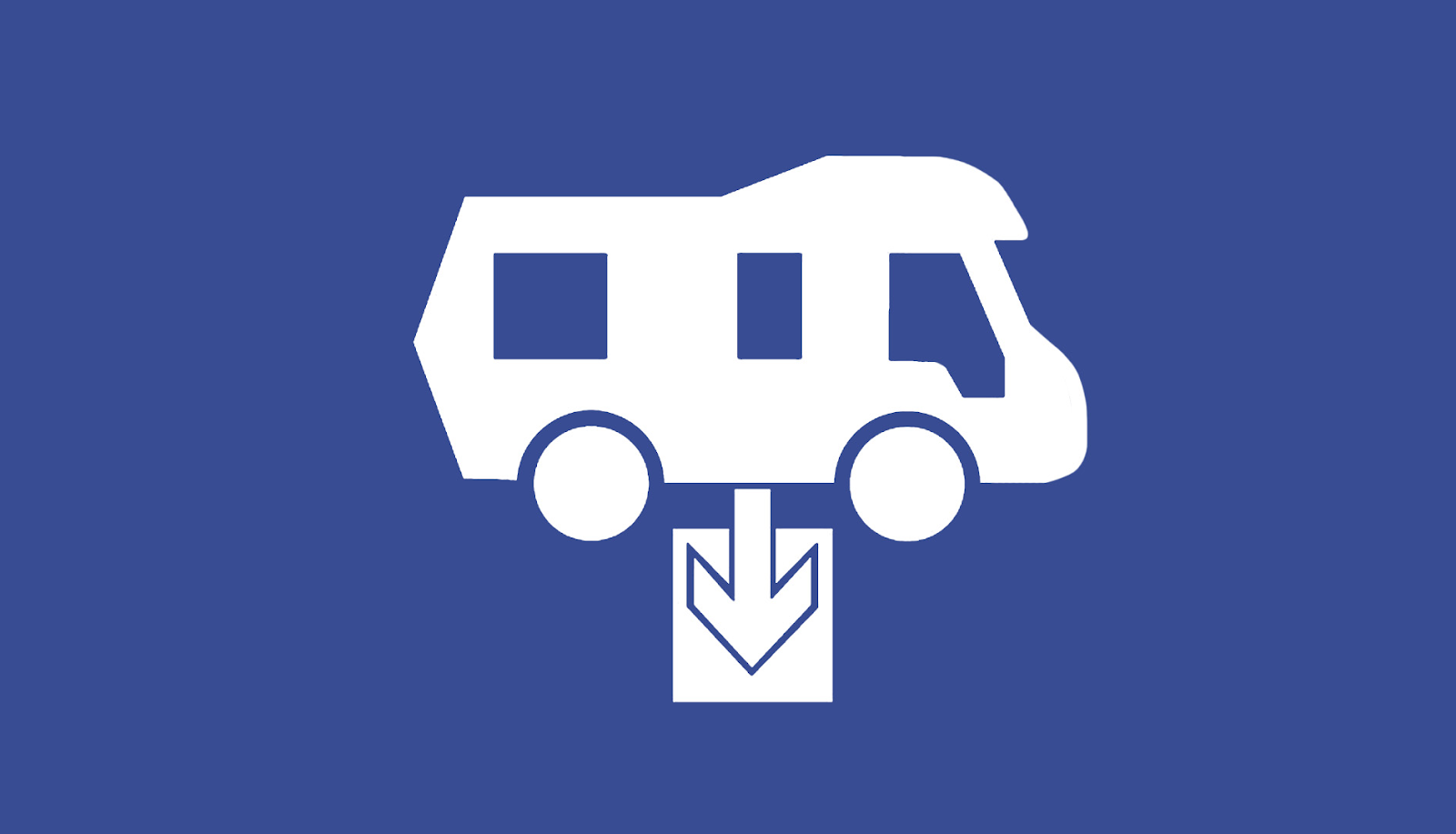
When it’s time to empty your grey water tank, follow these steps:
-
Drive your motorhome to the nearest dump station and park it as close as you can
-
Find your grey water outlet — located on the passenger side of your vehicle
-
Remove the grey water hose from its bag
-
If there’s an adapter, attach it to your grey water outlet
-
Take the cap off and secure the hose by pulling the clips towards you
-
Place the other end of your hose in the drain
-
Attach the tap handle firmly to the grey water tap beside the outlet
-
Turn the handle 90 degrees anticlockwise to open the tap
-
Let the grey water drain out then close the tap by turning the handle back 90 degrees clockwise
-
Detach your hose from the tap end and drain any remaining water
-
Flush your hose out with fresh water, clip the ends together and put it back in its bag.
For a visual run-through of emptying your grey water tank, see this motorhome onboarding video.
Where to find grey water dumping stations
You’ll find grey water dumping stations — where you can also empty your black water and refill your fresh water tank — throughout both the North and South Islands.
Many campsites and holiday parks have these facilities. You’ll also find dumping stations clearly signposted in towns and at certain petrol stations.
Your simplest way of finding the nearest dump station is to download CamperMate — from the App Store or Google Play.
Also check out our top ten free travel apps for an easy motorhome vacation.
Dumping stations are a vital facility in the world of recreational vehicles as they help you to minimise your impact on the environment when freedom camping. Remember that you’ll need to empty out the grey water tank before you return your motorhome.
For more information about using water onboard, read our guide to motorhome toilets and showers.
